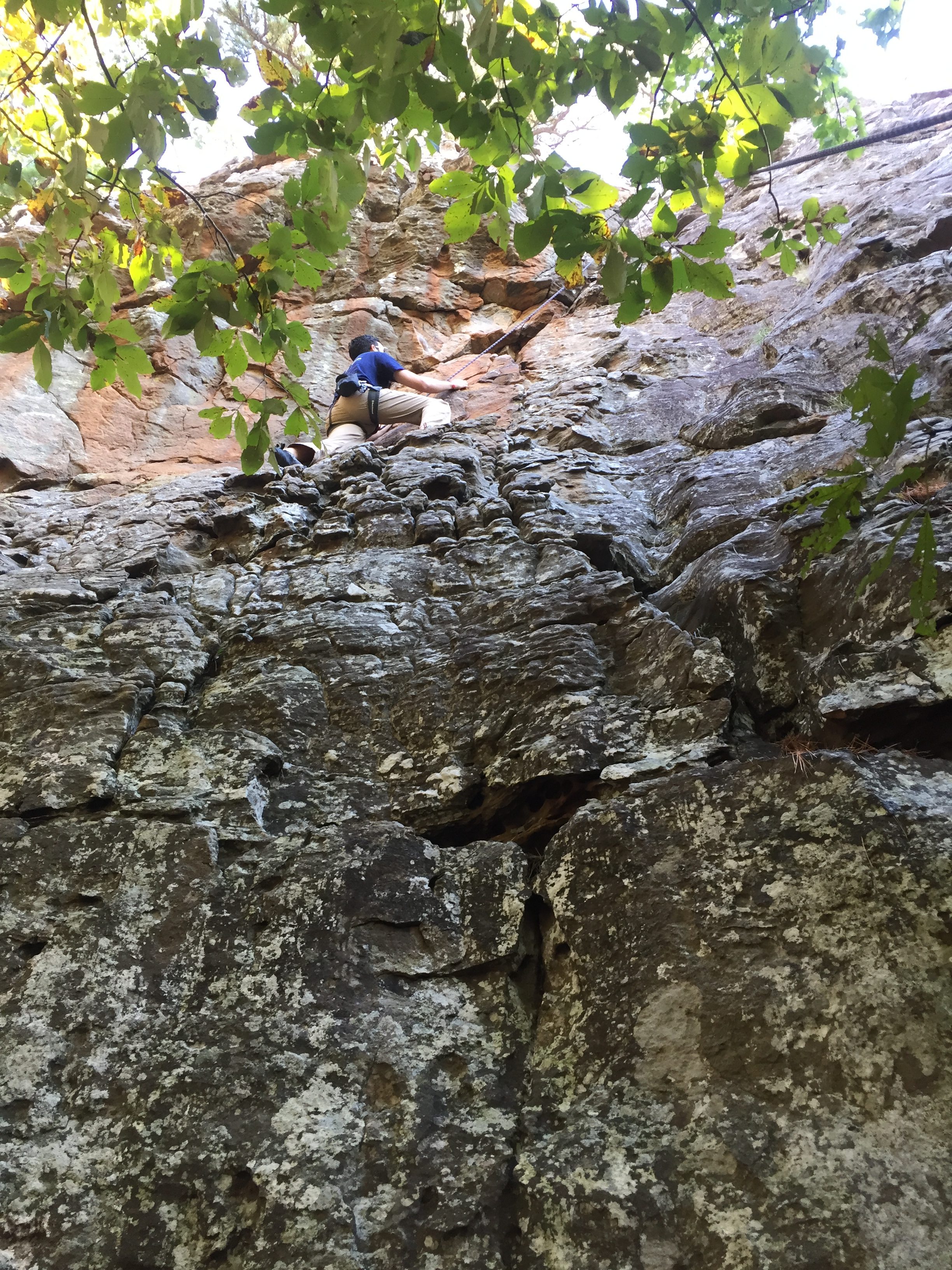
Kyle Haskett, PE
Associate
Kyle received both his Bachelor of Science in Architectural Engineering and Master of Science in Civil Engineering-Structural Emphasis from the University of Oklahoma. He is…
View Profile
Rock Climbing
Like many people, I was a bit apprehensive before I started rock climbing. I am not, however, afraid of heights; no, it’s the falling to my death that scares me. A while ago my best friend invited me to conquer my fear and start climbing at a gym in Oklahoma City. Consequently, this is where I met my wife, where she proceeded to help me more radically with my fear by dropping me 15ft while belaying me. Generally rock climbing routes can be solved in three easy steps; define the problem, plan before you start and solve with flexibility. If you can do these three steps you can solve any problem including rock climbing.
Defining the problem
To define the problem in rock climbing, you have to understand how most beginners climb. Most beginners try to climb the wall mainly using their arms; this is incredibly hard to maintain. When explaining rock climbing to friends, I like to compare it to climbing a ladder. When you climb a ladder, your legs do most of the work and your arms just keep you stable while you move your legs. In engineering terms, your legs are used to resist gravity, and your arms are used for lateral support. On more difficult routes you can end up using your feet for lateral support and arms for gravity. Check back with me in 10 years while I figure out how to do this.
Planning
It is best to plan out your climbing route before you start by determining the combination of hand and foot holds required to complete the route. When I plan out my route, not only do I save my strength while on the wall, I know exactly where to go next. Knowing what type of hold is next, hand or foot, you can determine the best solution to the route. This is where my engineering brain takes over and I look at each hold as part of my body’s free body diagram. Typically my legs are the gravity support and my arms are the lateral support, or resistance in the other two directions, as previously stated. Now the route becomes a puzzle. Rock climbing is all about solving free body diagrams for each move. Once you figure out the resistance the hold provides, the route tells you a how to climb it. The goal is to maintain control throughout the climb, typically meaning all your moves are achieved while your body maintains static equilibrium. By static, I mean you can keep your three points of stability. Without your three points of stability, it becomes a dynamic move, meaning your body is in motion when you make your next move. If my next move is a right hand move, I have to know what resistance my right hand is providing. I can then compensate with my other hand or a foot, otherwise stability is lost, static becomes dynamic and that whole falling to my death becomes more real.
Solving with flexibility
Have a plan, but be flexible. It is important to know when you are executing your planned route that there may be a better solution. As you climb the route you will gain perspective of new, possibly easier paths. Often times I find myself in the middle of the route with a hand hold or foot hold just beyond my reach or ability, or that a hand hold is not as big or as good as I thought it would be. It’s these times that you must be flexible with your previous solution of the route and try to find a new solution.
In the end, most things in life can be solved if you apply these three steps…define the problem, plan ahead and solve with flexibility. #climbaway

Are you passionate about the AEC industry? Do you want to use your talents with a group of the greatest engineers, landscape architects, technicians and support personnel in the industry? You've found the right place. Wallace is unique in the way we strive to make lives better for our clients, communities and employees. And we believe we have more fun doing our job than just about anyone else! The art of possibility. Discover it at Wallace.
Learn More
I’m not a climber, but enjoyed the read – I know more about rock climbing than I did a couple minutes ago. Great essay!